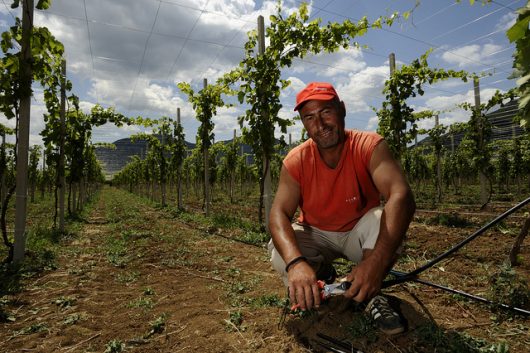Fostering Sustainable Agriculture in Bosnia and Herzegovina

Sustainable agriculture in Bosnia and Herzegovina is of utmost importance since the nation’s independence from Yugoslavia in 1992. Is status as a war-torn region ended after signing a peace treaty in December 1995, which enabled the formation of a complex state with two entities and one state district.
Bosnia and Herzegovina is comprised of hilly mountainous regions as well as fertile low-lands that are suitable for agriculture. It is one of the highest-ranking bio-diverse regions of Europe, as the region is comprised of various animal species and plants. This diversity helps make sustainable agriculture in Bosnia and Herzegovina achievable.
Agriculture is the backbone of the region’s rural sector and functions as an important aspect of the economy of Bosnia and Herzegovina. Agriculture constitutes about 20 percent of the total employment though, according to a study in 2017, post-war conditions and complex socio-economic structure has negatively impacted its development.
Land Resources and Best Practices in Agriculture
Total surface area suitable for cultivation in Bosnia and Herzegovina is about 1.6 million hectares. The land is segregated into three parts:
- The valleys around the rivers Una, Sava, Vrbas, Bosna, Drina, Sana and Spreča (which consists of high quality soil) are suitable for production of vegetables, fruits and crops like wheat, barley, soybean, corn, plums, apples and pears. They also grow medicinal herbs and industrial crops, such as fibers which are used to manufacture clothing.
- The highlands which are less suitable for large scale cultivation are used for cattle-breeding, animal-feed production, barley for breweries and potatoes.
- The Mediterranean region of the country is mainly comprised of low land, which has favorable weather and is suitable for greenhouse and open space farming. These methods help the large-scale cultivation of crops, vegetables, citrus fruits, farming fresh water fish and bee keeping.
Bosnia and Herzegovina has seen a trend of sustainable farming since the foundation of Bosnian Environmental Technologies Association (BETA) in 2000. BETA initiated the concept of organic farming in the regional label, and with the support of other international agencies, the association enhanced the promotion of organic agriculture practices among farmers.
As of 2017, Bosnia and Herzegovina has a surface area of 576 hectares devoted to organic farming. This is a lower percentage compared to neighboring countries, but the number steadily increases with the certified organic farming organization of the area; thus, organic farming works helps increase the overall levels of sustainable agriculture in Bosnia and Herzegovina.
The following strategies have been adapted to increase the sustainability of agriculture in Bosnia and Herzegovina:
- Conserving cultivable land through soil erosion prevention (via physical barriers around plants).
- Protecting quality of soil by maintaining moisture content, restoring organic matter and reducing CO2 emission from the soil.
- Maximizing the cultivation of crops through modern plantation and crop rotation technique, using weed management strategies and incorporating integrated pest management systems.
- Providing expert knowledge and education to farmers on innovative farming practices and ways to protect the farmland against climate change.
- Building of reservoirs to preserve water for irrigation and other uses of agriculture.
- Changing policy in agricultural sector so that farmers receive more financial support for using modern technology, tax incentives for their investment and risk insurance for their farming practices.
The Bees and Improving Agricultural Growth
The beekeeping sector of Bosnia and Herzegovina is a component of organic farming that comprises almost 1 percent of the total agricultural production. According to a Bosnia and Herzegovina statistics agency, there are almost 350,000 bee colonies in the country which produce around 2500 – 3000 tons of honey per year.
Various strategies have been adapted post-war to increase sustainable agriculture in Bosnia and Herzegovina. Bosnia and Herzegovina has fertile land and abundance of water bodies, but political tension between its two entities and lack of central governance deeply affects the prospect of agricultural growth of the country.
– Mahua Mitra
Photo: Flickr
